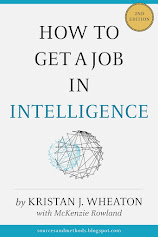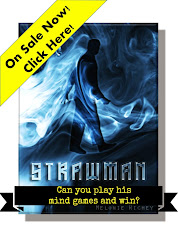Choosing a college is always difficult but imagine how much more challenging the issue is if you are a terrorist. You have been told that you are a smart young person, you have aced all your exams, and it has been suggested to you by several bearded men in assorted caves that you should go somewhere to learn how to build a nuke.
How to choose?
Not every college or university has a nuclear engineering program and, to the best of my knowledge, none of them offer a course in "Nuclear Weapons Building 101". Even if you find the right program with the right teachers and labs, etc., you probably also want to make sure you pick a place where you will not excite the interests of the local security services too much.
While it may be easier to imagine a terrorist group recruiting (or hiring) someone who already has the requisite knowledge to build a WMD, the attacks on the World Trade Center prove that Al Qaeda, at least, had (and may still have) the patience to execute a long-term plan involving the education of one of their best and brightest.
Cyndi Lee, in her thesis, Deadly Education: Evaluating Which Universities Are Attractive To International Terrorists, explores this issue in some depth.
Specifically, Cyndi used German universities as the testbed for her case study (The German university system provides most of the data, including indications of quality, that Cyndi needed to demonstrate her concept. The same system could be applied to any country where the data is available, however.)
Her goal was, first, eliminate any college or university that did not offer the possibility of getting the appropriate education and, second, rank order the remaining universities according to their perceived attractiveness to the international terrorist (in terms of program quality and ability to remain anonymous).
While Cyndi is careful to acknowledge the limitations of her study (not the least of which would be the unacceptably high false positive rate should her work be taken too literally), it does suggest that, in a resource constrained environment, there may well be ways to reduce uncertainty about possible terrorist courses of action and, in turn, allocate what resources that do exist more efficiently.
You can see the full text of the thesis below or download it directly from here.
Deadly Education -- Evaluating Which Universities Are Attractive To International Terrorists
Wednesday, August 4, 2010
Where Do Terrorists Want To Go To College? (Thesis Months)
Posted by
Kristan J. Wheaton
at
1:27 PM
2
comments
![]()
Labels: Germany, intelligence, intelligence analysis, September 11 2001, September 11 attacks, Terrorism, thesis, World Trade Center
Tuesday, August 3, 2010
Excellent Guidebook On Cognitive Biases, Free To Download (Royal Society Of Account Planning)
OK, so the Royal Society of Accounting Planning is a bit of a joke but the document that Eric Fernandez has put together on different kinds of cognitive biases is actually quite useful for anyone teaching or training analysts.
Even better, all the text is licensed under Creative Commons and all the pictures are either public domain or also licensed under Creative Commons which means you can download it, remix it and share it as you see fit.
One warning, though: Much of the information comes from Wikipedia and is currently under revision (to a large extent due to the first version of this publication). Fernandez has highlighted this by indicating that this publication is in "Beta" and has included a prominent warning label on the front cover.
That said, it is still a useful and engaging compilation of biases that could easily serve as a supplement to a variety of analytic methods or critical thinking courses.
One warning, though: Much of the information comes from Wikipedia and is currently under revision (to a large extent due to the first version of this publication). Fernandez has highlighted this by indicating that this publication is in "Beta" and has included a prominent warning label on the front cover.
That said, it is still a useful and engaging compilation of biases that could easily serve as a supplement to a variety of analytic methods or critical thinking courses.
Finally, many thanks to all of the alumni and friends who pointed this document out to me!
Cognitive Biases - A Visual Study Guide
Posted by
Kristan J. Wheaton
at
1:07 PM
0
comments
![]()
Labels: Creative Commons, intelligence, intelligence analysis, List of cognitive biases, Royal Society of Account Planning
Monday, August 2, 2010
Multi-Criteria Intelligence Matrices: A Promising New Method (Thesis Months)
One of the more interesting theses I have supervised over the last several years was Lindsey Jakubchak's The Effectiveness Of Multi-Criteria Intelligence Matrices In Intelligence Analysis.
Lindsey's thought was to take a version of the well-tested school of operational methodologies often referred to as multi-criteria decisionmaking methods (MCDM) and flip it on its head to turn it into an intelligence method. The results of her experiment show the method as promising in a number of different respects, though, clearly, there is still work to be done.
For those of you unfamiliar with MCDMs in general, there are many, many variants of the process and each is accompanied with all of the arguments and counter arguments typically associated with academe. Lindsey just wanted to see if there was any value in her proposition at all, so she chose one of the simplest, and most common forms of MCDM to "flip" -- a streamlined version of the US Army's Staff Study Method.
What do I mean by "flip"? Well, MCDMs are typically used to help select the most logical course of action based on a given set of criteria. Say, for example, you were looking to buy a car. You had down selected to three particular SUVs but you couldn't make up your mind which one was best for your family. An MCDM would ask you to select the criteria you thought were important to you and your family (seating, reliability, gas mileage, storage, etc) and then rate each car, using a matrix to sort the results. Arguably, the car that best meets your criteria is the one you should select (Anyone familiar with Consumer Reports, for example, knows that this is the way they come to their conclusions about various products).
What if it is not you buying the car, though? What if you are trying to figure out what kind of car a friend might buy? Your friend might prefer sports cars to SUVs and have an entirely different set of criteria for choosing one. That's what I mean by "flip". What if you could use an MCDM not as a tool to help you make better decisions but as an intelligence analysis method to help you figure out what an enemy, a criminal or a competitor is likely to do? That was what Lindsey set out to test and she gave her method a name -- the Multi-Criteria Intelligence Matrix.
While, due to the topic she decided to explore -- Russia's relationship with OPEC -- she was not able to evaluate forecasting accuracy (though I give her full points for trying), she was able to compare her experimental group to the control group in a number of other interesting ways. Using the standards in ICD 203 as a guideline, she was able to say a couple of interesting things like:
"Although the experimental group indicated a lower level of knowledge in regards to the topic (Russia’s relationship to OPEC) and expressed a lower level of interest with the topic, both of which were found to be statistically significant, the experimental group was able to arrive at a broader range of possible Courses Of Action (COAs)."
"The average completion time for the control group was 70 minutes and the average time for the experimental group was 58.6 minutes. Therefore, when looking at the big picture, although the experimental group seemed less knowledgeable and less interested, they were able to arrive at a more complete list of relevant possible COAs, and they completed their analysis in less time."
In the end, the study suggests the method has promise and, with Lindsey's results in hand, it has more evidence to back it than many other, more widely taught, methods. I have embedded the full text below or you can download it here."While a few students in the control group provided one or two alternative COAs, the majority of the student-analysts merely provided one COA with few comparisons to any alternatives, thus not providing any insight to whether or not alternative solutions were considered. In the experimental group, the student-analysts, who used MCIM, provided a list of all possible COAs, and identified the importance of specific criterion or various factors to those COAs."
Related Posts:
Top 5 Intelligence Analysis Methods
The Effectiveness of Multi-Criteria Intelligence Matrices In Intelligence Analysis
Posted by
Kristan J. Wheaton
at
3:06 PM
0
comments
![]()
Labels: Consumer Reports, Experiment, intelligence, intelligence analysis, multi-criteria intelligence matrix, Scientific control, Social Sciences, thesis
Subscribe to:
Posts (Atom)






